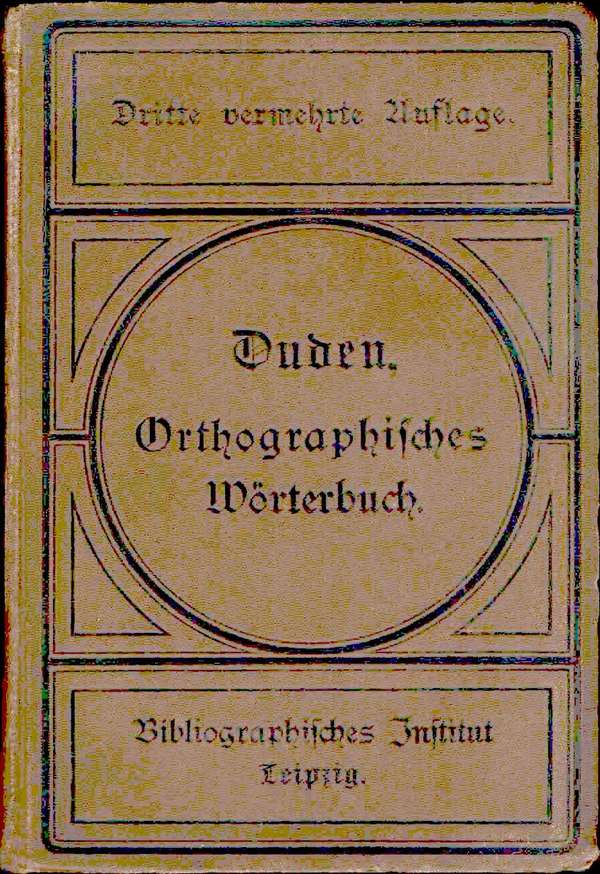What does it say? Spelling in Germany
- 31. August 2017 - General, Germany, Historical Documents, Knowledge
Probably every genealogist knows the problem: In old documents, the spelling of words often varies. That doesn’t make it easier to read old handwritings. For genealogy it is especially difficult, if personal data is affected, in particular names.
Today the spelling often appears to be arbitrary. The reason is, that in Germany for a very long time there were no orthographic rules. Regarding personal data an aggravating factor is that many people weren’t able to write themselves. Therefore they couldn’t verify the information for example in church books. If I think about how often my name is misspelled and in how many different ways even today (and even when I spell it), it is no wonder that there were various notations.
The early days of the German written language
German as a written language began to evolve during the 8th century in the writing rooms of monasteries. To write it down, the monks used the Latin alphabet. But the letters were insufficient to form all the sounds. Different solutions were found to solve those problems and varied writing habits developed. Furthermore, Germany as a nation state didn’t exist until the 19th century. The various states had not only different languages or dialects but also quite different spellings, due to the fact that people wrote the way they spoke.
From the 14th century onwards, German replaced Latin as officialese (the language used for the official correspondence). Due to this as well as the invention of letterpress printing in the middle of the 15th century, trading and the increasing number of people who were able to read and write a supra-regional spelling was needed. New High German evolved. But this doesn’t mean that a unified spelling existed. Publishers and schools followed various rules. Up to the 18th century there were for example many double consonants where today only one is used. And up to the 19th century ei was often written as ey or eÿ. Punctuation wasn’t used consistently either. As late as the 19th century, virgules (slashes) were often used instead of commas.
Unification of spelling
Since the 16th century academics started to make spelling suggestions. For a long time they were of a phonetic kind (write as you speak), but in the 19th century a historic line emerged as well that wanted to take etymology into account. This second point of view was supported by the Brothers Grimm in their German dictionary (Deutsches Wörterbuch). From about 1850 onwards there were also regulations by the various school administrations. But they differed considerably.
After the foundation of the German Empire in 1871, a unification of spelling became even more important. A first conference in 1876 failed more or less. But afterwards the first authoritative rulebooks were published in Bavaria and Prussia. In 1880, Konrad Duden released a “complete orthographical dictionary of the German language” (“Vollständiges orthographisches Wörterbuch der deutschen Sprache”). It merged both regulations and became influential throughout the German-speaking area. Later the publication and its further editions were commonly called the “Duden”.
But only in 1901, during the Second Orthographical Conference, a unified spelling was officially approved. It relied heavily on the “Duden” that had in practice already ensured an extensive unification. The new spelling was taught in schools and used by administrative bodies from 1903 onwards. Some innovations were: the th was removed from words of German origin (Tal instead of Thal – a valley), but still used in foreign words (Theater). Suffixes were standardized. For many words, especially foreign ones, more than one spelling was allowed. This was only restricted later on by the “Duden”. For punctuation there were no regulations.
Reforms – or rather not?
Shortly after the introduction of the unified spelling, further reforms were demanded. A simplification was desired. But the German spelling was in practice only developed by the “Duden” until 1996. Mostly the changes were minimal, but in 1915 regulations on punctuation were included that had no basis in the resolutions of 1901.
There were many approaches to reform the spelling, but they weren’t successful. During National Socialism there were well-advanced plans for a reform in 1944. They failed, because they weren’t considered strategically vital during the war. In other cases, too much resistance was the reason for failure. For example, again and again there were calls for the use of small letters for nouns, but it was always dismissed.
During the division of Germany there were two editions of the “Duden”. Regarding the spelling there were few differences, but some in the selection of keywords and in the word meanings. There were considerations of reforms in both parts of Germany as well. From 1980 onwards, east and west even worked together in this matter.
In 1996, after the reunification, a spelling reform was finally approved and introduced in 1998. After some changes, it became binding in 2005/2006 – at least for schools and administrative bodies. Although the reform made relatively small changes and even allowed more than one spelling in many cases, it was opposed vehemently. Until today, many people wish back the old spelling.


Comments are disabled for this post.
0 comments